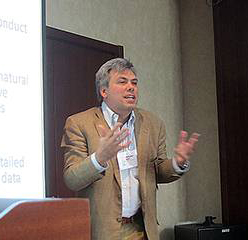- A
- A
- A
- ABC
- ABC
- ABC
- А
- А
- А
- А
- А
The Importance of a Good Diagnosis
On April 1-4, 2014 in Moscow, the HSE with support of the World Bank and the International Monetary Fund organizes the XV April International Academic Conference on Economic and Social Development. The Conference Programme Committee is chaired by Professor Evgeny Yasin.
 |
| Professor Sebastian Galiani |
― Will this be your first lecture at the HSE-Moscow? How did you get involved in the April Conference?
― I once gave a lecture on property rights at a conference organized at the HSE by Professor Sonin. This time I was kindly invited by Professor Yasin.
― Are the problems of inequality and poverty the same all over the world? To what extent are these economic problems, and to what extent are they social?
― There are commonalities and differences across regions — and even within regions — in terms of both the causes and consequences of poverty and inequality. Just to give an obvious example, large differences exist between the rural and urban poor. Obvious economic reasons are at the root of the cause of both phenomenon, but important behavioral aspects also contribute to their perpetuation, ceteris paribus. Poverty, obviously, varies much across the development ladder of countries.
― How important is economic growth to reduce poverty?
― In the long run, economic growth is a powerful instrument for reducing absolute poverty. Since 1820, the world’s extreme poverty rate has decreased from 85% to below 20%. In Latin America, Chile is an impressive success story in terms of poverty reduction. However, growth is not always so effective in reducing poverty, at least in the short and medium terms. In the U.S., poverty plummeted during the early 60s, which was a period of rapid economic growth. It has remained relatively stable since then, even though the U.S. economy has continued to grow and has, in fact, expanded quite swiftly since the late 1980s. This change in trend is mainly accounted for by the increase in income inequality that has taken place during this latter period.
― Inequality affects the extent to which growth affects poverty. Does it also affect economic growth?
― Inequality, per se, may also be detrimental for economic growth. When markets are missing or imperfect, the distribution of wealth and power affects the allocation of investment opportunities and, thus, detracts from the economy’s efficiency. Additionally, high levels of economic and political inequality tend to give rise to economic and political institutions that systematically favor the interests of the most influential groups.
― From what you have learned working in Latin America, do you think there are solutions to the problems of poverty and inequality that can be applied to Russia?
― Certainly, there are important lessons that we can gather from recent research, especially experimental research. We are learning much about how to better affect incentives and also about policies that work and policies that do not work as well as expected. A large part of that research is conducted in Africa and South Asia, though.
Latin America is a highly unequal region. Poverty is concentrated among informal workers, which makes redistribution more difficult. Therefore, there, the efforts have been directed at finding cost-effective policies targeted to poor households. The aim was mainly that of building up the present and future income-generation capacity of the poor. Governments have relied heavily on Conditional Cash Transfers. These instruments are useful to alleviate poverty in the short-run, and have also shown some effectiveness at inducing human capital accumulation. However, other interventions are shown to be much more effective to achieve the second objective. It is important first to have a good diagnostic of what are the problems and constraints and then to evaluate the proposed solutions.
― Would you give us an example of an intervention that seems to work and that could be relevant in Russia.
― A large body of research, both experimental and quasi-experimental, now exists that shows that early childhood interventions are cost-effective. That seems an obvious area where some of the efforts in Russia could be focused, given its level of development.
Anna Chernyakhovskaya, specially for the HSE news service

